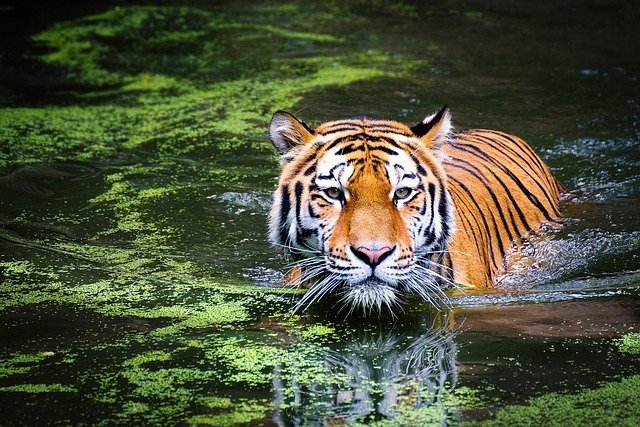Whiskers and Webbed Feet: The Fascinating World of Fishing Cats
Imagine a feline that's as comfortable in water as it is on land, with webbed paws and a love for fish. Welcome to the intriguing realm of the fishing cat, a unique and often overlooked species that challenges our perceptions of typical feline behavior.

A Glimpse into Fishing Cat Evolution
The fishing cat’s evolutionary journey began millions of years ago when it diverged from other feline species. Fossil evidence suggests that these cats have inhabited wetland areas for at least 2 million years, gradually developing adaptations that allowed them to exploit aquatic food sources. Unlike most cats, which typically avoid water, fishing cats embraced their watery habitat, leading to the development of their distinctive features.
Over time, natural selection favored traits that enhanced their ability to hunt in water. Their double-layered coat, with a dense, waterproof undercoat, allows them to stay warm and dry even when submerged. The partial webbing between their toes aids in swimming and walking on muddy terrain, while their short, stocky tails serve as rudders in the water.
Fishing Cats: Masters of Aquatic Hunting
One of the most fascinating aspects of fishing cats is their specialized hunting technique. These feline anglers have perfected a method of catching fish that sets them apart from other cats. They are known to sit patiently at the water’s edge, using their paws to create ripples that mimic the movement of insects on the water’s surface. This clever tactic attracts fish, which the cat then swiftly snatches with a quick paw swipe or a dive into the water.
Their exceptional eyesight, both above and below water, allows them to spot prey with remarkable accuracy. Fishing cats have also been observed using their tails as lures, swishing them in the water to attract curious fish. This diverse array of hunting strategies showcases their intelligence and adaptability.
Habitat and Distribution: A Shrinking Domain
Historically, fishing cats were found across a wide range of wetland habitats in South and Southeast Asia. Their distribution stretched from Pakistan in the west to Indonesia in the east, encompassing countries such as India, Bangladesh, Sri Lanka, and parts of China. However, their range has significantly contracted in recent decades due to habitat loss and human encroachment.
Today, these cats are primarily found in isolated pockets within their former range. The Sundarbans mangrove forests shared between India and Bangladesh represent one of their last strongholds. Other important habitats include the wetlands of Nepal’s Terai region and parts of Sri Lanka. Conservation efforts are ongoing to identify and protect remaining populations across their range.
Conservation Challenges: Swimming Against the Tide
The fishing cat faces numerous threats in the modern world. Wetland destruction for agriculture and urban development has dramatically reduced their available habitat. In many areas, these cats are also hunted for their meat and fur, or killed in retaliation for preying on domestic poultry.
Climate change poses an additional challenge, as rising sea levels threaten to inundate coastal habitats. The estimated global population of fishing cats is believed to be under 10,000 mature individuals, leading to their classification as Vulnerable on the IUCN Red List.
Conservation efforts are underway to protect this unique species. These include habitat restoration projects, community education programs, and initiatives to reduce human-wildlife conflict. The cost of these conservation efforts varies widely, but can range from tens of thousands to millions of dollars depending on the scale and scope of the projects.
The Future of Fishing Cats: Hope on the Horizon
Despite the challenges, there is hope for the fishing cat. Recent studies have revealed new populations in unexpected areas, suggesting that these adaptable felines may be more resilient than previously thought. Innovative conservation approaches, such as the use of camera traps and environmental DNA analysis, are helping researchers better understand and protect these elusive cats.
Efforts to create protected corridors between fragmented habitats offer promise for maintaining genetic diversity among isolated populations. Additionally, conservation organizations are working with local communities to promote coexistence and develop sustainable livelihoods that don’t conflict with fishing cat habitats.
As we continue to unravel the mysteries of these remarkable felines, it becomes clear that the fishing cat is not just a curiosity of nature, but a vital part of wetland ecosystems. Their unique adaptations and behaviors remind us of the incredible diversity of life on our planet and the importance of preserving it for future generations.





